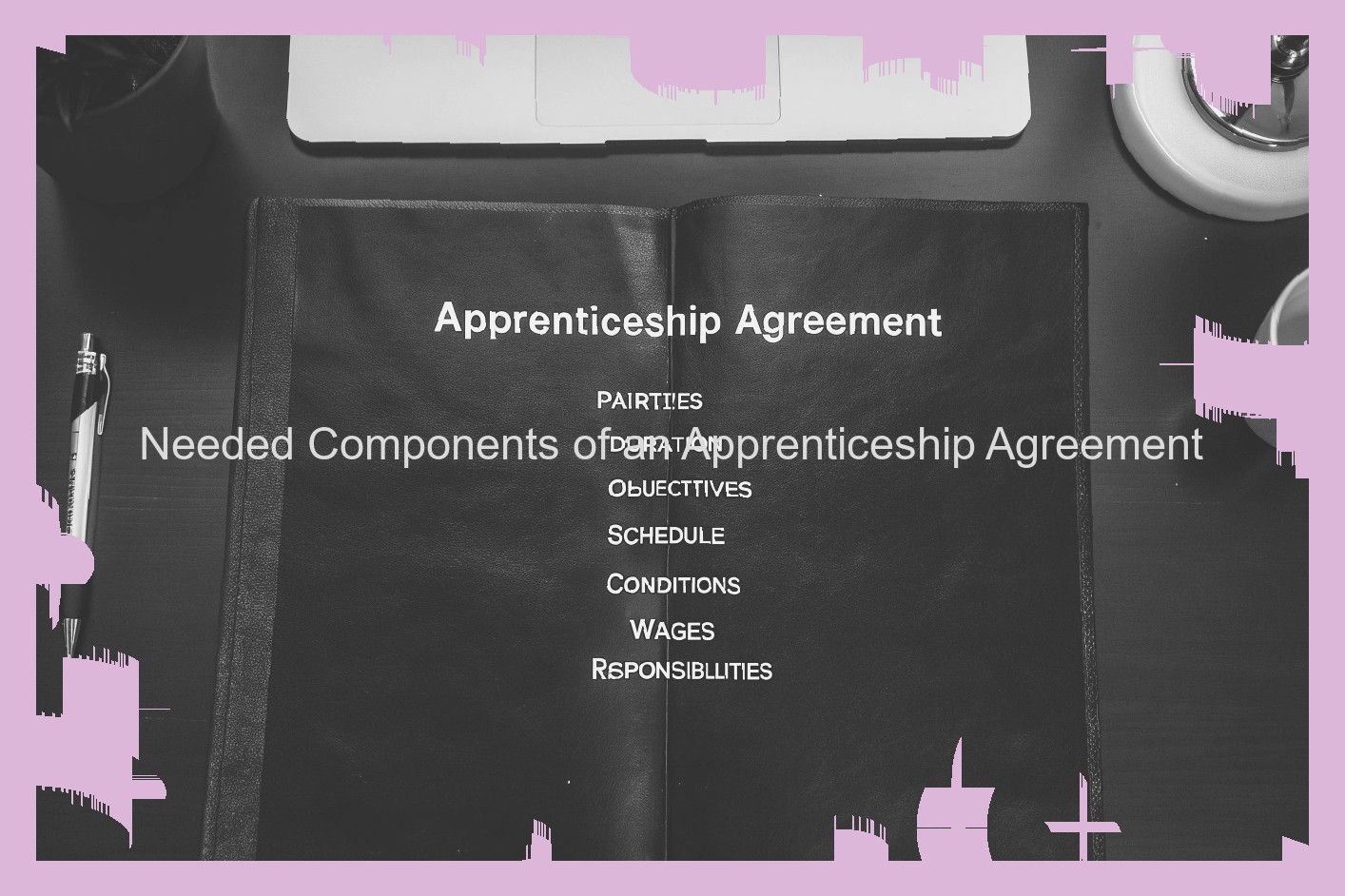Apprenticeship Agreement Overview
Apprenticeship agreements are a cornerstone of the apprentice / employer relationship. They commit both parties to a set of agreed terms and conditions and ensure valuable training and support is provided to the apprentice. The agreement sets out the responsibilities of the apprentice, the employer and the relevant training provider in writing and acts as evidence of the rights of the apprentice. The apprenticeship agreement is legally required under the current funding rules, so the apprentice is not eligible for Government funding if there is no apprenticeship agreement.
Although the law does not require the apprenticeship agreement to be part of a written contract of employment, if the apprentice has a contract of employment or other written terms and conditions of employment (for example, if the employment commences on the same date as the start of the apprenticeship) , it is recommended that the apprenticeship agreement forms part of this.
The apprenticeship agreement should contain the following key information: The apprentice must sign the apprenticeship agreement to confirm acceptance; and both the apprentice and the employer should each retain a copy of the signed agreement. It should be updated if there are any changes to it during the apprenticeship. There are other forms of agreement that could be used (such as an "apprenticeship training plan" or the learning agreement as part of a study programme), but the basic content remains the same. If an apprentice has not entered into an agreement with their employer, it may be difficult to contest the apprentice’s entitlement to pay and to leave entitlement, as such an agreement proves that the apprentice was indeed employed by the organisation.

Legal and Other Requirements
The legal requirements of an apprenticeship agreement are governed not only by the Common Rule but also by the Fair Labor Standards Act ("FLSA"), the National Apprenticeship Act, the Equal Employment Opportunity Commission’s guidelines on voluntary affirmative action programs, and certain U.S. Department of Labor ("DOL") guidance publications. The Common Rule is a federal regulation addressing grants awarded from federal agencies. Further obligations for apprentices on grants include additional restrictions on lobbying and participation in organizing campaigns, and the apprentice must be a citizen of the United States or an authorized U.S. worker. Apprentices on funding awards are also subject to DOL requirements under the WVU Startup initiative if they receive any funding in connection with their internship.
The FLSA governs the employment of workers under the age of 18, and describes when a worker is considered an employee versus an independent contractor. It requires employers to pay employees federal minimum wage, and overtime for hours exceeding 40 in a week. The FLSA allows apprentice agreements to be excluded from minimum wage and overtime requirements provided that: (1) "apprentices" are employees as defined by the FLSA; (2) the apprentice is compensated on an hourly or piece-rate basis; (3) the apprentice becomes fully competent by the end of the proposed period through actual performance of the work described in the apprenticeship program; (4) the period of employment does not exceed the time necessary for training the apprentice in accordance with the apprenticeship program’s standards; and (5) the work done by the apprentice is incidental to learning the trade. Further requirements mandated by the FLSA include holding appropriate certificates of completion and status reports, conducting skills evaluations, and recording the apprentice’s salary structure.
Employers may also be subject to the National Apprenticeship Act if they provide an apprenticeship program registered with the DOL. The Act provides specific requirements for apprenticeship agreements, which are also incorporated into the Joint Labor and Apprenticeship Panel’s JANATP 204 – Standard Conformance Review Policy ("JANAP 204"). There are three different types of apprenticeship agreements: program standards, training plans, and individual apprentice agreements. The Joint Labor and Apprenticeship Panel ("JLA Panel") is part of the DOL’s Office of Apprenticeship and reviews all apprenticeship agreements, and has the statutory responsibility to oversee the apprenticeship program in the U.S. The JLA Panel may propose adjustments to an apprenticeship agreement before it will grant approval.
The EEOC has established set standards for a voluntary affirmative action programs. Guidance established by the EEOC indicates that these affirmative action programs require the participant to take the following steps: (1) recruit at local schools, colleges, and other local programs that reach the class and gender sought by the program; (2) visit schools to observe students and reach out to those interested in the program; and (3) participate in local job fairs.
Finally, U.S. DOL guidance informs the Common Rule, FLSA, and the EEOC standards already mentioned. Employers are required to comply with statutory apprenticeship requirements or suffer potential loss of registered apprenticeship program and/or funding.
Key Components of an Apprenticeship Agreement
Every apprenticeship agreement must include the following:
The Parties. The agreement should clearly name each of the parties to the apprenticeship.
The Duration. It should state that the apprenticeship is for a specific duration. If there is a probationary period, the agreement should describe the term of the probationary period, and clarify that those hours will be credited towards completion of the apprenticeship.
The Objectives. The agreement must set forth the objectives of the apprenticeship.
The Schedule. The agreement should include the schedule for the apprenticeship, including any time spent in classroom instruction or on-the-job training.
The Conditions to be met. The agreement must outline what the apprentice must do to satisfactorily complete the apprenticeship, including any on-the-job training requirements, workplace assignments, tests and examinations. It should also identify any required classroom instruction.
The Wages. Under the PMA, the Agreement must precieve both the amount of wages paid, and the frequency of payment. This includes the understanding that the wages may vary based on productivity and skill obtained.
Responsibilities
The agreement will set out the roles and responsibilities of the apprentice, employer and, if there is one, the training provider.
The apprentice must:
If the apprentice is under 18 years old when they will be starting the work-based part of their training, this will set out the arrangements for ensuring their safety, particularly in relation to travelling to and from work and working alone.
The employer must in particular:
The employer commits to allow the apprentice to spend the time set out in the agreement in attending both college and on-the-job training. This requires a close working relationship with the college and co-ordination with college timetables in order to ensure that the apprentice is on-site when not attending college.
If a training provider is included in the apprenticeship agreement, the agreement should set out at least what the training provider commits to do. It may be appropriate to set out the training provider’s responsibility for:
In addition to the responsibilities set out above, it may be worth the employer formally agreeing to be responsible for the apprentice’s recruitment, dismissal, health & safety, equal opportunities and grievance & disciplinary procedures.
Training and Development
Apprenticeship training plans are an essential component of the agreement and necessary to ensure successful and effective development of the apprentice by providing a clear framework for the apprentice’s skills and competencies to be achieved. A training plan typically includes a blend of on-the-job training and formal classroom training in accordance with the approved apprenticeship standards. Apprentices may also require training and development or "soft skills" to help them build their confidence and working relationships with colleagues, customers and other third parties.
Formal classroom training, which varies from employer to employer, often requires apprentices to attend college on a day release basis. Under 2017 funding reforms, formal education may also be just-in-time and delivered to apprentices by relevant training providers and employers, who collectively devise appropriate training schedules that progress through the apprenticeship standards in line with the approved assessment plans.
Employers will increasingly consider the quality of their training and development framework and their standards against the Industry Reference Standards (IRS), which provide formal approval for standards and assessment plans for recognised frameworks. These standards, which were developed by the Institute for Apprenticeships (IfA), are mandatory for all new apprenticeship standards and existing standards must be reviewed by 2020. Central to the IRS is ensuring apprentices acquire the skills, knowledge and experience they require to achieve the expected minimum standard in the sector in which they are working.
Apprentices working towards an apprenticeship standard need be able to demonstrate their competence and areas of development through the use of defined assessments. The assessment organisation (an independent organisation accredited or regulated by the IfA) will plan the end-point assessment stage of the apprenticeship framework.
The apprentice will also be required to develop their "English and Maths" skills and behaviours which form part of the overall apprenticeship standard and learning programme. The responsibility for developing apprentices’ English and Maths skills lies with the employer and the end-point assessment organisation.
Wage & Other Financial Terms
When it comes to the money side of AEAs, there are two parts. The first part is how much you will be paid every two weeks. The second part is how much you’ll owe at various points of the journey.
When you enter into an AEA, you are supposed to receive a regular wage each pay period. Some states may have an hourly minimum. Under federal law, the pay cannot be less than either of the following:
Some AEAs grant automatic increases as you progress through your apprenticeship. Others tie increases to your performance, both in on-the-job training and/or in your classroom instruction.
Apprenticeship training is a way to get quality hands-on training while earning a paycheck. It is also an investment. Your employer or trade association usually pays for you to attend your courses . So does the government through its workforce development agencies. You have been hired to work, so you may not be charged for your training. On the other hand, some employers offer safety equipment to apprentices at subsidized prices. If your program is operated by a union, it likely charges you dues.
While the on-the-job training or classroom training is free, a few other costs come with the territory. You should ask yourself the following types of questions before signing your AEA:
All of these questions are important. As an apprentice, you are making an investment in yourself. It makes sense to sit down and do an ROI (return on investment). This means looking at both sides of the ledger: What do you get, and what do you have to give?
Termination & Disputes
Termination and Dispute Resolution For Apprenticeship Agreements
In circumstances where the apprentice does not wish to complete the apprenticeship agreement, a number of options are available. The apprentice may simply resign from the apprenticeship agreement. In some cases, the apprentice may be dismissed by the employer. In most cases of this kind, an employer can dismiss an apprentice on the same grounds as they would have dismissed any employee. Therefore it is important to consider the question of dismissal for cause, as dismissal without cause on notice does not constitute a termination of the apprenticeship agreement, therefore the term of the apprenticeship continues. This issue is covered further in the section of this bulletin headed "Termination".
The apprenticeship agreement also has provisions for the voluntary termination of the apprenticeship agreement by the apprentice. Paragraph 12 of the ESA-Apprenticeship Regs sets out the procedure for voluntary termination of the apprenticeship agreement. The apprentice is entitled to provide seven days’ notice of his or her intent to terminate the apprenticeship agreement. If the apprentice fails to provide the required notice period, the parties can agree to waive the notice requirement. The apprenticeship agreement will automatically terminate in the absence of such a waiver. Should there be an amendment to the apprenticeship agreement, the apprentice has two days from the effective date of the amendment to terminate the apprenticeship agreement in relation to the amended term. Where the apprenticeship agreement is terminated by the apprentice or by the employer, the employer must notify the applicable provincial regulatory authority and the apprentice within seven days of termination. A resignation of the apprenticeship agreement is without prejudice to the apprentice’s rights to claim the benefit of the contract.
Sometimes, a dispute will arise between the apprentice and the employer or between the employer and the provincial regulatory authority. The apprenticeship program itself set out a procedure for apprentices to file a complaint and for the provincial regulatory authority to send a notice to the employer requiring the employer to take steps to rectify any deficiencies that have been identified. It is important to proceed with caution because if the apprentice filed a human rights complaint for example, an employer must respond accordingly to the tribunal and this may require joining the employer as a party to the tribunal process or litigation in order for the matter to be resolved. An employer’s failure to respond fully within the required timeframe may also affect the employer’s rights in the absence of a tribunal decision.
There are also some provisions that apply to apprenticeship agreements which are common to employment agreements generally. As such, the principles and remedies that apply to employment agreements of indefinite duration will apply to apprenticeships agreements, including constructive dismissal.
Sample Apprenticeship Agreement Template
This may or may not be required in your state, but most states require some terms and conditions be put into writing and signed as part of the Apprenticeship Agreement.
In the regulations on apprenticeships (29 CFR Part 10), the DOL suggests the following standard terms and conditions for the written apprenticeship agreement:
• Name and address of the participating apprentice
• Name and address of company and sponsor
• Starting date of apprenticeship
• Probationary period
• Outline of job processes
• Wage rates for all periods of apprenticeship
• Duration of apprenticeship
• Periodic evaluations, including methods of evaluation, frequency of evaluations and procedure to revise program if successively fails to achieve required level of proficiency
• Procedure or course of study required
• List of supplemental classes and other instruction required with specified hours for each if applicable
• List of related instruction classes and other instruction related to work processes or competencies, including hours
Additional Terms and Conditions of an Apprenticeship Agreement
Beyond items required by local or state law, or suggested by the DOL for inclusion in an agreement, other additional terms and conditions that are frequently included in an apprenticeship agreement include:
• Work schedule
• Benefits, including health insurance, retirement plan and details on payment of such benefits
• Leaves of Absence
• Safety issues
• Drug Tests
• Sexual Harassment
• Dress Code
• Confidentiality requirements
• Non-Competition provisions
• Other items that are specific to your organization
Sample apprenticeship agreement templates may be found at the DOL’s apprenticeship website here.
Conclusion & Other Best Practices
An apprenticeship agreement is a critical part of the apprenticeship process, but it is only one step on the road to building a successful program for all involved. But now that you know the components of a strong apprenticeship agreement, you can ensure that it successfully lays down all of the terms of your involvement. By carefully setting down the rules of the apprenticeship relationship before it begins, you help both your organization and your apprentice focus on the goal of their training—the apprentice’s successful education and transition into the workforce.
Both apprentices and employers can take additional steps to ensure that their time spent working together has the best chance of success . Here are a few best practices that both groups can follow:
Just like any other business relationship, the partnership between employers and apprentices needs to be treated with care. As the apprenticeship agreement demonstrates, the parties have a long list of requirements that they are obligated to fulfill in order to hold up their respective ends of the deal. But these contracts aren’t just legally binding—apprenticeships represent a major financial and emotional investment for everyone involved. Make the investment worth it by sticking to the terms of your agreement, monitoring and evaluating the apprenticeship relationship, and cultivating a positive relationship with the apprentice. With care, communication, and respect, you can ensure that your apprenticeships are a clear win-win for everyone involved.



